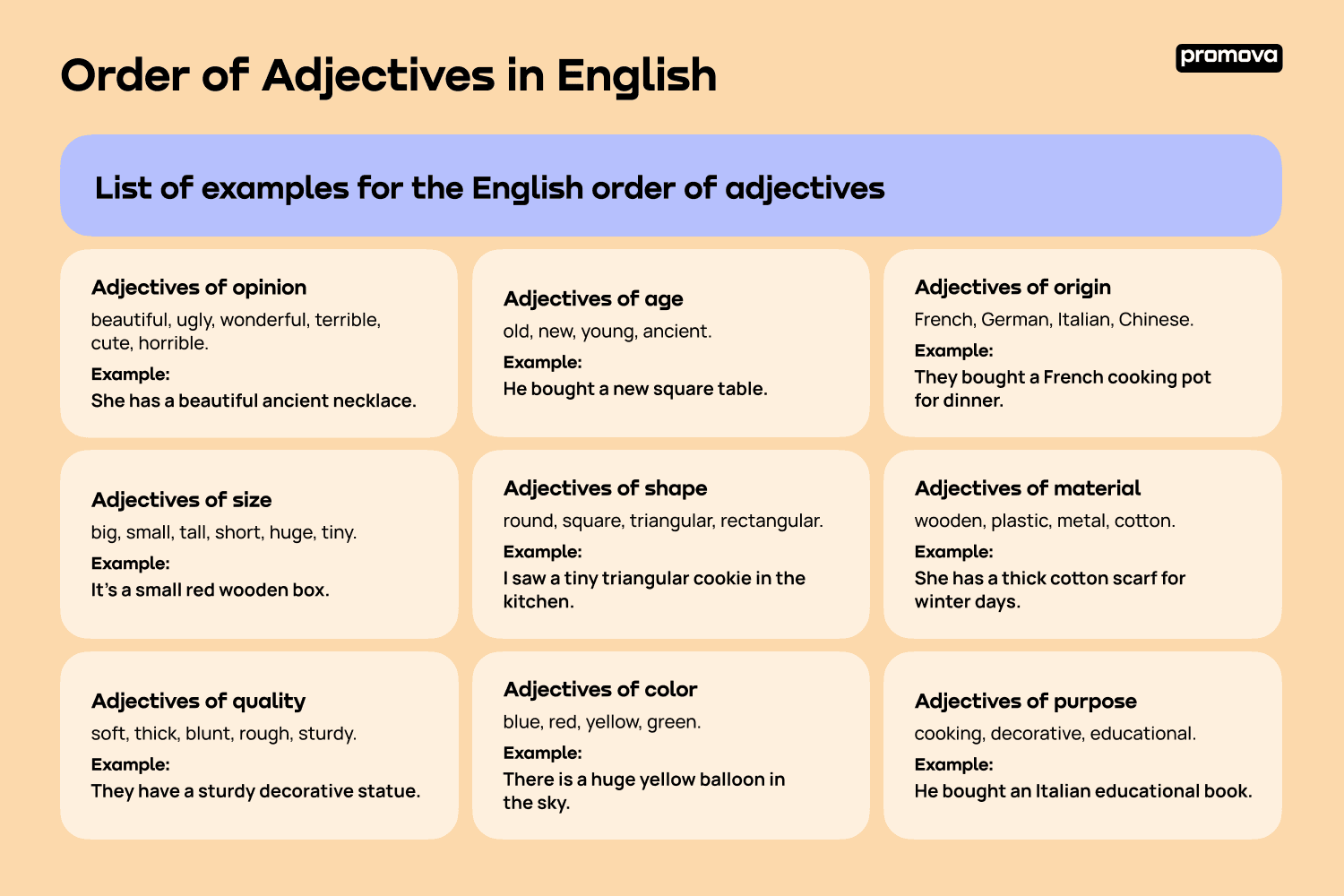Order of Adjectives in English
Contents
English is a complex language, and one of its most interesting features is the order of adjectives. Adjectives are words that describe a noun, and they can be used to make sentences more varied and descriptive.
There is a proper order of adjectives that's not easy to get at the start but becomes intuitive over time. Let's take a look at the English adjective order with examples, starting with why we have an order in the first place.
Why is the Adjectives Order Important?
The order of adjectives helps us make sentences more understandable. When adjectives are placed in the wrong order, it can confuse readers and make them difficult to understand.
It is also important to remember that adjectives can affect the meaning of a sentence. For example, if you say, "It's a tall, red building", the adjective “tall” is describing the building, while the adjective “red” is giving it a color.
Here is an example of a confusing sentence: "I love American small cars". In this sentence, it is unclear whether the speaker loves American cars that are small, or cars that are both American and small.
The correct order for this sentence would be: "I love small American cars".
The Royal Adjective Order Rule
In English, there is a rule that is often referred to as the “Royal Adjective Order”. This rule states that adjectives should be placed in the following order:
- Opinion
- Size, height, and length
- Quality
- Age
- Shape
- Color
- Origin
- Material
- Purpose
For example, if you want to describe a ball, you would say, "It's a five-year-old, round, red ball". Here, the adjective “five-year-old” comes before the adjective “round” because it is a quantity, and the adjective “round” comes before the adjective “red” because it is a size.
Keep in mind that not all adjectives need to be used in the order listed above. For example, if you want to describe a tall, blue building, you would say, "It's a tall, blue building". Here, the adjectives “tall” and “blue” can be placed in either order.
Also note that some adjectives work both before or after the noun. For example, if you want to describe a beautiful car, you could say, "It's a beautiful car" or "It's a car that is beautiful". Here, the adjective “beautiful” can come before or after the noun.
2
List of examples for the English order of adjectives
Here you will find example adjectives for each part of the adjective order chart.
- Adjectives of opinion: beautiful, ugly, wonderful, terrible, cute, horrible
- Adjectives of size: big, small, tall, short, huge, tiny
- Adjectives of quality: soft, thick, blunt, rough, sturdy
- Adjectives of age: old, new, young, ancient
- Adjectives of shape: round, square, triangular, rectangular
- Adjectives of color: blue, red, yellow, green
- Adjectives of origin: French, German, Italian, Chinese
- Adjectives of material: wooden, plastic, metal, cotton
- Adjectives of purpose: cooking, decorative, educational
Here are 10 sentences with different orders from all of the above:
- It's a small red wooden box.
- She has a beautiful ancient necklace.
- He bought a new square table.
- There is a huge yellow balloon in the sky.
- They bought a French cooking pot for dinner.
- I found an ugly plastic toy in the garden.
- She has a thick cotton scarf for winter days.
- They have a sturdy decorative statue.
- He bought an Italian educational book.
- I saw a tiny triangular cookie in the kitchen.
Punctuation with Adjectives
When using adjectives, it is important to remember to use the correct punctuation. In English, adjectives are separated by commas if they belong to the same type. For example:
"She has a beautiful, cute necklace."
However, if we were talking about a "beautiful" and "ancient" necklace, there's no need to separate the two with commas.
When using more than three adjectives, it is best to separate them with commas for clarity:
"Her necklace is cute, beautiful, and ancient to boot!"

Summary
Correct adjective word order can be confusing at the start and takes some time to learn. However, with practice, it becomes easier and more natural. If you remember the Royal Order, it shouldn't be much of a challenge at all.
Separate adjectives with commas when using the same type and more than three adjectives for clarity. Aside from that, don't worry too much about mistakes - over time, you'll intuitively understand the correct order of adjectives!
Comments